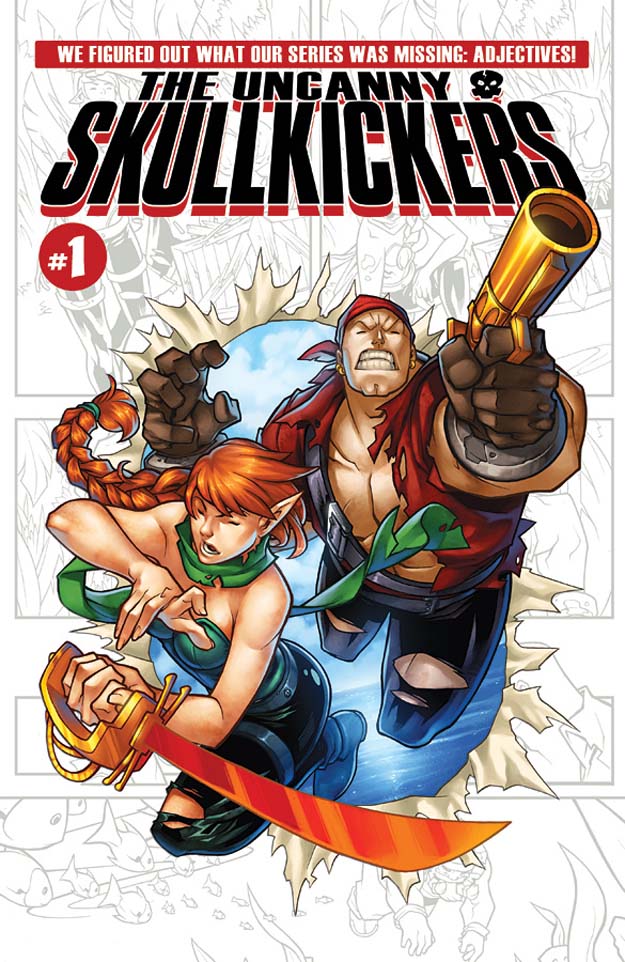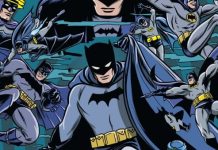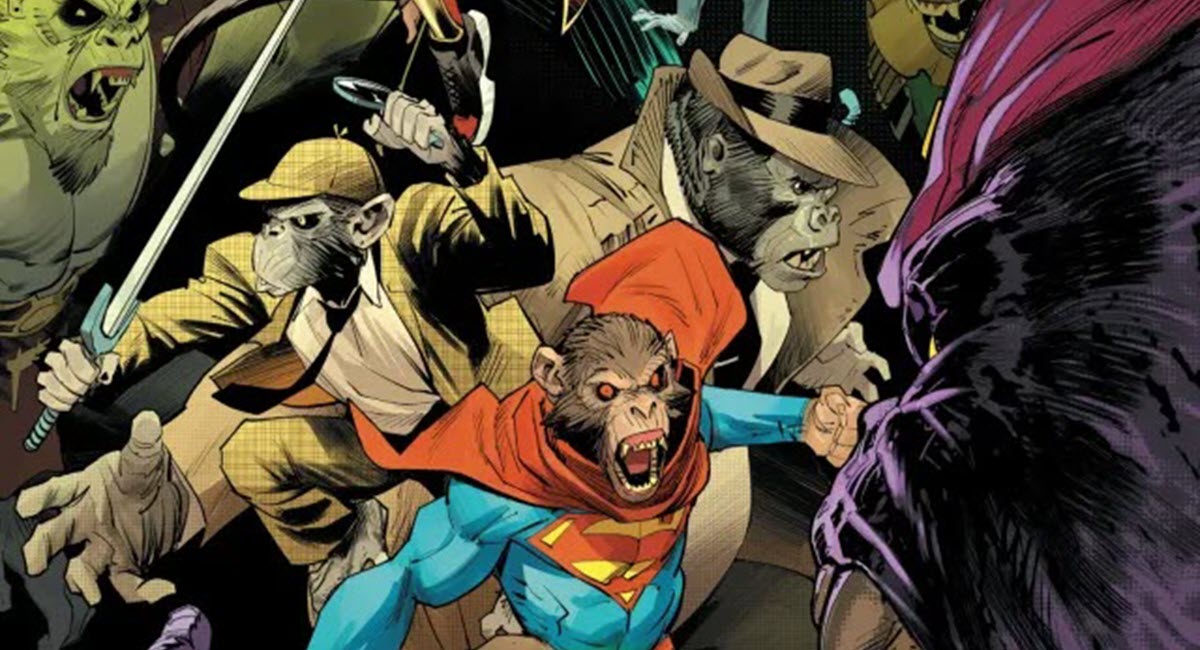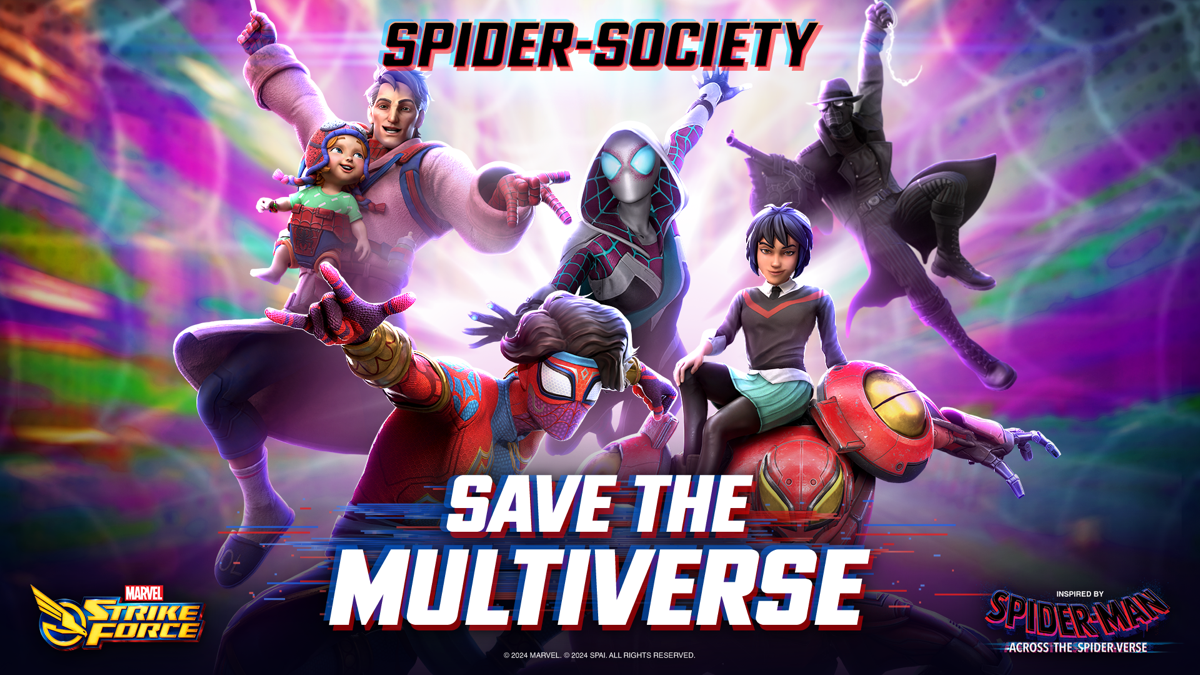Uncanny is such a strange word to use to describe a comic, much less a range of different comics which tend to feature characters who aren’t unexpectedly familiar – they’re the X-Men and Avengers, they’ve been around for decades. Which is why it’s nice to see that the Skullkickers creative team of Jim Zub and Edwin Huang have elected to reclaim the word and place it in a grammatically correct setting, to create Uncanny Skullkickers #1.
Uncanny has become an adjective of power over the last year or so, and the name change certainly worked to get my attention to a book which had never been on my radar before. This is actually issue #19 of the Skullkickers series from Image, with this being a one-issue sales gimmick which will switch over next month to become ‘Savage Skullkickers #1’ in March. But now I’ve got on the Jim Zub train (trains don’t have radar, that is a poor metaphor), it’s time to see just where it’s heading!
Billing itself as a jump-on point, I found that the issue does manage very nicely to get across the basics of the Skullkickers world whilst remaining thoroughly accessible. Funnily enough though, this is despite the two-page recap at the start, which catches readers up on a story which sounds super-complicated, with lots of different names to remember and subplots going on. In reality, this is a two-person desert island story, with the lead characters washed ashore after their ship crashes. The issue focuses on them trying to build shelter and find food/getting drunk and making fun of each other) for twenty of so pages, with a few random fight scenes emerging from nowhere to keep the pace up.
It’s a funny comic, with a particularly inspired visual joke which scrolls along the bottom of each page. Huang’s art is cartoony and fun, and with a few interesting quirks – he doesn’t draw eyes, I quickly noticed, but rather draws the characters as though they’re always caught with their eyes shut. It can be a little distracting at times, but for the most part it quickly settles into the background, and acts as a way of establishing an individual quirk for the artist. The storyboarding is straightforward and works nicely – with clean, simple action sequences. The pages are brisk and establish the jokes, which are then hammered into place by some excellent lettering.
The lettering here, which is by Marshall Dillon, is an essential part of this issue. Zub makes continual use of sound effects and word balloons to structure the jokes on each page, meaning Dillon has to place every piece of text perfectly in order to keep the momentum of each gag. The fight scenes in particular work mainly because Dillon places the sound effects in just the right part of each panel to draw the reader around the battle and create a sense of movement and flow – with a less dynamic sense of pace and story, the lettering could utterly kill an issue like this. Dillon is the undisputed star of the issue.
Zub’s writing is entertaining, establishing the characters and setting quickly so we can get straight into jokes. More than in other comics, I was struck by his page breakdowns – each page here seems to have been given a purpose, which has then been written into. So for example, there’s a page which features a montage, a page which reveals a Prophet-style breakdown of all the items the characters are stranded on the island with, and a few other experiments with page layout. Each page has been given a purpose, making for a choppier read which gives the series a better read than if each page flowed into the next. By making each page into a minievent, I suppose I’m saying, the comic makes the most of its page count and offers a variety of different jokes and character elements than if this were a continuous, flowing piece of story.
I don’t know if I got that point across very well.
At any rate, Uncanny Skullkicker’s #1 does work as an excellent jump-on point for readers, with an inclusive sense of humour which fizzes on the page. The characters are fun to read about, the artwork is striking and tells the story well, and it left me interested in going back and reading the previous 18 issues, which I’m hoping will soon be collected in a trade called ‘Skullkickers: Origins’.








Comments are closed.